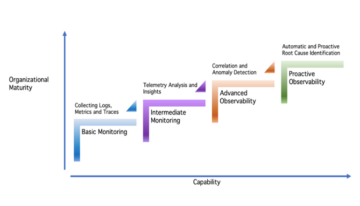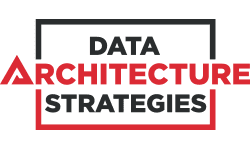

Within the last several years, the marketplace has shifted from industrial-produced to data-based. Consequently, many companies have a strong drive to become data-driven, from financial firms to nonprofits. Yet, when C-suite managers and others discuss making money from data, they see the face of data analytics and Data Science. These conversations miss the Data Architecture and Data Management fundamentals behind this façade essential for getting good business insights. Instead, senior managers may see both as hindrances, taking too long and becoming too unwieldy.
How can data architects and others, who see the value of a solid Data Management foundation, sell an organization on investing in it and get executive buy-in? In a Data Architecture Strategies (DAS) webinar, Donna Burbank, managing director at Global Data Strategy, recommended steps for becoming a “data advisor” – a person who helps businesspeople understand data-driven goals and how to achieve them.
Connect Digital Transformation via Both Business and Data Strategies
When executives talk about becoming data-driven, they want to “optimize their existing organization to become more digital,” said Burbank. Some examples include positioning their products online, running a more effective marketing campaign using different technologies, or selling their data to another firm.
These discussions correspond with Gartner’s definition of digital transformation, impacting how data connects with digitization goals. Burbank describes two objectives: business optimization versus transformation.
Business optimization, or becoming a data-driven company, involves improving efficiency and growing revenue (e.g., eliminating manual effort). In contrast, business transformation or becoming a data company strives for new business models, such as monetizing a company’s information.
Whether a company chooses business optimization or transformation, a data advisor comes into play by helping to align this business strategy with an organizational Data Strategy. As a first step, this person should link business goals with technology solutions across different Data Management contexts, as the figure below shows.


Strike a Balance When Describing a Data Management Solution
Put the diagram above, showing Data Management activities across five levels, in front of executives and you’ll receive glassy-eyed looks. As Burbank explained, “It is not that managers do not care about Data Management; they probably don’t understand what it means to be data-driven.” Such a diagram goes over their heads.
To get to this understanding, executives need a data advisor to connect business interests and the data activities that need to happen. Burbank recommends that such a data advisor explain Data Management fundamentals in a balanced way, between the academic (the theory guiding organizational and planning activities) and the practical (immediate steps designed to grow and keep a business profitable).
But if a company strays too much toward the academic side by getting the perfect Data Architecture and documenting everything about it, then nothing gets done. Or if it drifts too much to the practical and pushes out products and services with errors, that causes chaos and loses customer trust.
Burbank explains an equilibrium as striking a balance between the defensive activities required for reducing risk (such as documentation) and offensive actions designed to create opportunities (such as discovering a new product line).
Understand the Senior Manager’s Perspective
Striking a balance to the C-suite hinges on understanding their perspective. People get more excited about gaining business insights from Data Management for profitability (the offensive or carrot), than complying with regulations to manage risk (the defensive or stick).
However, Burbank noted that some managers and industries identify more with the carrot than others. The salesperson or a Silicon Valley startup will respond better to the carrot than the stick. In contrast, a lawyer or a medical institution would likely focus more on the stick – staying compliant.
Knowing this pattern helps a data advisor gain traction with an executive’s support. For example, throwing in a bit of a carrot when pitching to a C-suite officer with a sales background, such as the improved efficiency from Data Governance, will allow more bandwidth for gaining business insights, attracting more significant investment from that person.
In addition to balancing the carrot/stick value when speaking to the C-suite, Burbank suggested considering the heart (emotion) versus the head (facts and figures). For example, managers at mission-driven organizations, like a nonprofit helping those with cancer, tend to respond better to examples and anecdotes appealing to the heart. Executives at financial institutions would react better to a presentation with facts and figures.
Know What Is Top of Mind for the Executive
Burbank emphasized that executives view Data Management solutions according to what is top-of-mind for that person. She said 90% of clients start thinking of Data Management with a solution already in mind for their business problem, such as a data warehouse, lake, or mesh. Given this tendency, research the projects with the executive’s foremost interest. When presenting a solution, she said, “Say it in a way that means something to the businessperson listening.”
Burbank advised against focusing solely on your technical interests – e.g., adding buzzwords like “metadata” or “master data.” This approach will lose the listener.
Instead, link how the Data Management solution, with fundamentals, benefits the manager’s top project. For example, say, “Hey, to support your big online marketing campaign, we are working on a project to give you a complete view of the customer.”
Helping to increase Data Literacy among businesspeople is fine. However, Burbank noted:
“A data advisor does not have to teach the business what the data professional does for a living. In the end, data professionals take roles to enable the business. So, your data stewards or businesspeople do not need to know everything that you must do to keep Data Quality good.”
In other words, keep it simple.
Drive Excitement for the Initiative
Once the data advisor gets an executive to buy into a solution using Data Management fundamentals, the advisor gathers momentum, evangelizing across different teams in the organization’s chart, including business and IT.
With a group of businesspeople and IT on the same page, the advisor may want to organize a presentation that makes the business case across the firm, aligns the solution, and explains the overall objective and how to get there.
Burbank suggested addressing the areas with the highest business value and return on investment (ROI) and aligning the solution with the organizational vision. Typically, the business case used for the presentation falls into one of these categories:
- Decreased costs: Such as reducing manual labor and implementing more efficient business processes
- Increased revenue: Such as optimizing pricing through analytics or improving marketing campaigns
- Reduced risk: Such as complying with industry regulations and minimizing litigation potential due to a data breach
- Protected reputation: Such as improving customer satisfaction or trust in the brand
Always present the risk of doing nothing with any company-wide presentation, said Burbank. For example, explain the increased costs of falling out of compliance or the likelihood of falling behind the competition.
Be sure to align any communications about the Data Management solution with the organizational vision. Use company documentation like the annual report or news releases to better understand the company’s plans and trajectories.
Provide a Clear Roadmap for Execution
When driving excitement for a Data Management solution and its future vision, the data advisor needs to follow up quickly with a plan. A roadmap shows this path and keeps the Data Management initiative credible with executives.
Burbank suggested specifying the objective within a timeframe – e.g., six to eight months – for the Data Management solution.
Connect the Data Management solution’s roadmap with other business initiatives and their roadmaps. That approach staves off potential objections on how the Data Management solution will happen and gets support from others. For example, if the marketing department plans a big digital transformation, tie in how the Data Management solution would facilitate better Data Quality with this initiative.
Be aware of the organization’s culture, as it may determine the pace of Data Management implementation. If there is a lack of awareness and acceptance, the data advisor may wish to include organizational change management techniques in their roadmap and other communications.
Summary
Donna Burbank excitedly explained that organizations have a strong drive to leverage data, providing a more significant opportunity for getting buy-in to a foundational Data Management solution. Yet executives and other businesspeople struggle to understand how to become data-driven. They need a data advisor to connect the Data Management piece with the business goals.
Getting buy-in requires good communication with the C-suite, including a balanced presentation and understanding the perspective and mind of the senior manager. Once the executive buys in, get others in the organization on board. Build excitement and follow up with the plan to get there with any steps toward organizational change management.
Watch the webinar here:
Image used under license from Shutterstock.com
- SEO Powered Content & PR Distribution. Get Amplified Today.
- PlatoData.Network Vertical Generative Ai. Empower Yourself. Access Here.
- PlatoAiStream. Web3 Intelligence. Knowledge Amplified. Access Here.
- PlatoESG. Carbon, CleanTech, Energy, Environment, Solar, Waste Management. Access Here.
- PlatoHealth. Biotech and Clinical Trials Intelligence. Access Here.
- Source: https://www.dataversity.net/getting-executive-buy-in-for-data-management/
- :has
- :is
- :not
- $UP
- 224
- 300
- a
- About
- about IT
- above
- academic
- acceptance
- According
- Achieve
- across
- actions
- activities
- adding
- addition
- addressing
- advisor
- against
- align
- aligning
- Aligns
- allow
- already
- among
- an
- analytics
- and
- annual
- Another
- any
- appealing
- approach
- architects
- architecture
- ARE
- areas
- AS
- At
- attracting
- aware
- awareness
- background
- Balance
- balanced
- balancing
- Bandwidth
- BE
- become
- becoming
- behind
- below
- benefits
- Better
- between
- Big
- Bit
- board
- both
- build
- business
- business models
- business strategy
- Business Transformation
- buy
- Buys
- by
- C-suite
- Campaign
- CAN
- Cancer
- care
- case
- categories
- causes
- change
- Chaos
- Chart
- clear
- clients
- comes
- Communication
- Communications
- Companies
- company
- Company’s
- competition
- complete
- compliance
- compliant
- complying
- Connect
- connects
- Consequently
- considering
- contexts
- contrast
- conversations
- Costs
- create
- credible
- Culture
- customer
- Customer satisfaction
- data
- Data Analytics
- data management
- data quality
- data science
- data warehouse
- data-driven
- DATAVERSITY
- defensive
- Department
- designed
- Determine
- different
- digital
- Digital Transformation
- digitization
- Director
- discovering
- discuss
- discussions
- do
- documentation
- does
- doing
- done
- Dont
- drive
- driving
- due
- e
- Effective
- efficiency
- efficient
- effort
- eight
- eliminating
- emotion
- emphasized
- enable
- end
- Equilibrium
- Errors
- essential
- everything
- example
- examples
- excited
- Excitement
- executive
- executives
- existing
- Explain
- explained
- Explains
- façade
- Face
- facilitate
- facts
- Falling
- Falls
- Figure
- Figures
- financial
- Financial institutions
- fine
- Firm
- firms
- First
- five
- Focus
- focusing
- follow
- For
- foremost
- Foundation
- from
- front
- Fundamentals
- future
- Gain
- gaining
- Gartner
- get
- getting
- Give
- given
- Goals
- Goes
- good
- Group
- Grow
- Growing
- happen
- Have
- head
- heads
- Heart
- helping
- helps
- here
- highest
- hinges
- How
- How To
- However
- HTTPS
- identify
- if
- immediate
- impacting
- implementation
- implementing
- improved
- improving
- in
- include
- Including
- Increase
- increased
- industries
- industry
- industry regulations
- information
- Initiative
- initiatives
- insights
- instead
- Institution
- institutions
- interest
- interests
- into
- investing
- investment
- involves
- IT
- ITS
- jpg
- Keep
- Know
- labor
- Lack
- lake
- Last
- lawyer
- levels
- Leverage
- License
- like
- likelihood
- likely
- Line
- LINK
- listener
- Listening
- literacy
- Litigation
- living
- Long
- LOOKS
- lose
- Loses
- MAKES
- Making
- manage
- management
- Management Solution
- manager
- Managers
- managing
- Managing Director
- manual
- many
- Marketing
- marketplace
- max-width
- May..
- means
- medical
- mesh
- mind
- minimizing
- models
- Momentum
- money
- months
- more
- more efficient
- much
- must
- Need
- needs
- New
- new product
- news
- Nonprofit
- nonprofits
- noted
- nothing
- objective
- objectives
- of
- off
- offensive
- Officer
- on
- once
- ONE
- online
- Online Marketing
- opportunities
- Opportunity
- optimization
- optimizing
- or
- organization
- organizational
- organizations
- Other
- Others
- out
- over
- overall
- Pace
- page
- path
- Pattern
- People
- perfect
- person
- perspective
- piece
- pitching
- plan
- planning
- plans
- plato
- Plato Data Intelligence
- PlatoData
- Play
- positioning
- potential
- Practical
- present
- presentation
- pricing
- probably
- Problem
- Product
- Products
- Products and Services
- professional
- professionals
- profitability
- profitable
- project
- projects
- providing
- pushes
- quality
- quickly
- React
- receive
- recommended
- recommends
- reducing
- regulations
- Releases
- report
- reputation
- required
- requires
- research
- Respond
- return
- revenue
- Risk
- roadmap
- roadmaps
- ROI
- roles
- running
- Said
- sales
- Salesperson
- same
- satisfaction
- say
- Science
- see
- sell
- Selling
- senior
- Services
- several
- she
- shifted
- should
- showing
- Shows
- shutterstock
- side
- significant
- Silicon
- Silicon Valley
- Simple
- SIX
- So
- solely
- solid
- solution
- Solutions
- some
- something
- Source
- speaking
- start
- startup
- staying
- Step
- Steps
- Stick
- strategies
- Strategy
- strives
- strong
- Struggle
- such
- support
- sure
- Take
- taking
- Talk
- teams
- Technical
- techniques
- Technologies
- Technology
- than
- that
- The
- The Projects
- their
- Them
- then
- theory
- There.
- These
- they
- Thinking
- this
- those
- Through
- Throwing
- TIE
- timeframe
- to
- too
- top
- toward
- traction
- Transformation
- Trust
- two
- typically
- under
- understand
- understanding
- use
- used
- using
- Valley
- value
- Versus
- via
- View
- vision
- want
- Warehouse
- Way..
- we
- webinar
- What
- What is
- when
- WHO
- will
- with
- within
- words
- working
- would
- years
- yet
- you
- Your
- zephyrnet












